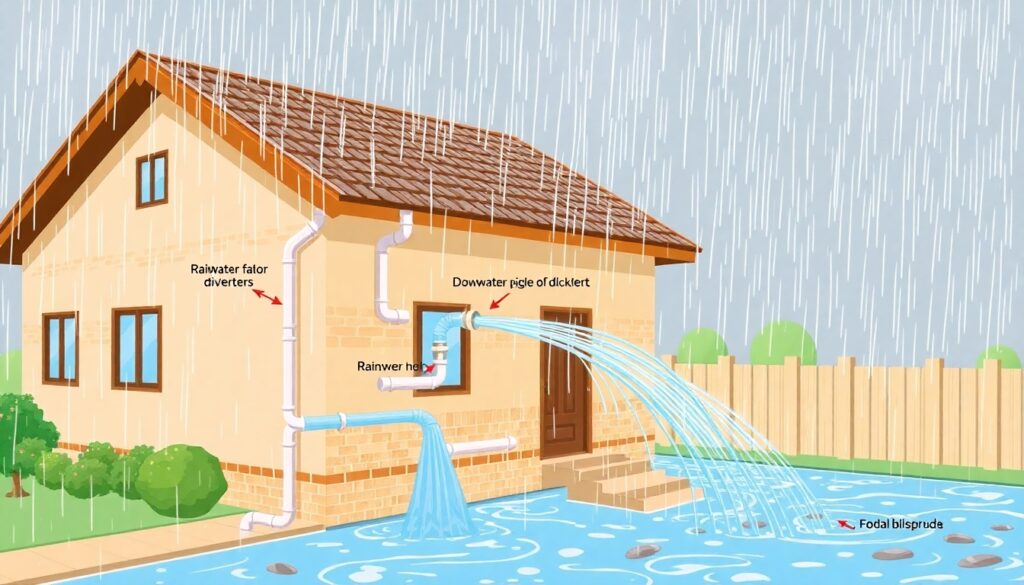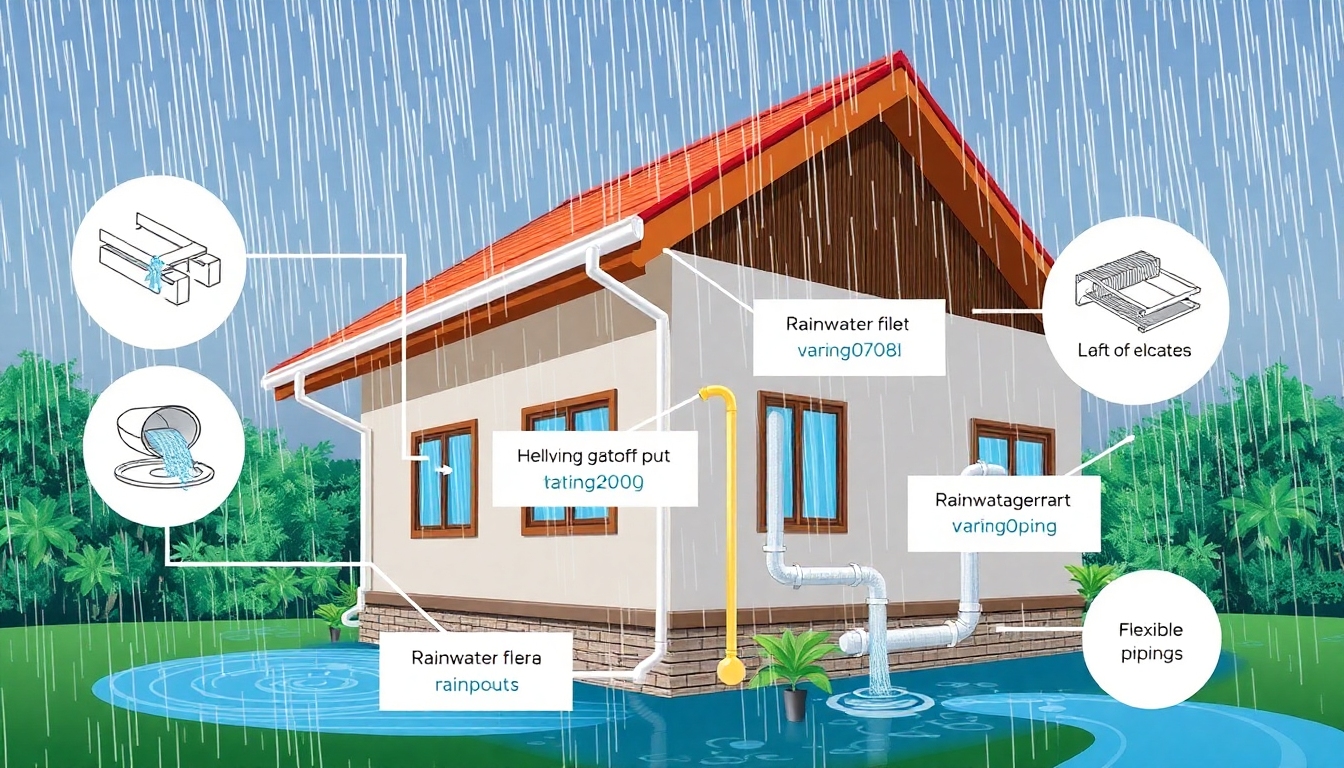As the monsoon season approaches, it becomes essential to ensure that your property is ready to handle heavy rainfall. Monsoon Fittings Instructions—such as gutters, downspouts, rainwater diverters, and drainage systems—play a crucial role in safeguarding your home from water damage. Installing these fittings correctly not only protects your building but can also improve the efficiency of water management. In this article, we’ll guide you through the process of installing monsoon fittings to ensure that your home is well-prepared for the rains.
What Are Monsoon Fittings Instructions?
Monsoon fittings are plumbing and drainage components designed to manage the heavy rainfall typically associated with the monsoon season. They are key to directing rainwater away from your property, preventing overflow, and avoiding structural damage. Key components of Monsoon Fittings Instructions include:
- Gutter systems: These collect rainwater from your roof.
- Downspouts: These direct water from the gutters to the ground or a drainage system.
- Rainwater diverters: Devices that reroute water for rainwater harvesting or to avoid flooding specific areas.
- Drain covers and flexible piping: These components ensure debris is kept out of the drainage system, preventing blockages.
By installing monsoon fittings properly, you can protect your property from water damage, ensure proper drainage, and even collect rainwater for future use.
Step-by-Step Guide to Monsoon Fittings Instructions
1. Preparing for the Installation of Monsoon Fittings
Before diving into the installation of your Monsoon Fittings Instructions, preparation is essential. First, gather the necessary tools and materials. You’ll need the following:
- Monsoon Fittings Instructions (gutter sections, downspouts, rainwater diverters)
- Drill and screws
- Level
- Tape measure
- Ladder
- Sealant (optional)
Additionally, ensure you have a plan in place for the installation. Measure the perimeter of your roof, mark the downspout locations, and determine the necessary components for your drainage system.
2. Installing Gutters
Gutters are the first line of defense in managing monsoon water flow. Here’s how to install them effectively:
Measuring and Cutting Gutter Sections
The length of the gutter sections should be measured along the edge of your roof. The gutters should slope slightly towards the downspout to encourage water flow. Once you have the right measurements, cut the gutter sections to fit.
Installing Brackets and Securing the Gutter
Next, install gutter brackets along the roof edge. These brackets should be spaced about 18–24 inches apart to support the weight of the gutter. Secure each bracket with screws and ensure they are level. Afterward, attach the gutter sections to the brackets, ensuring a slight slope towards the downspout.
3. Installing Downspouts
Downspouts direct water from the gutters to the ground or an underground drainage system. Here’s how to install them:
Marking and Cutting Holes for Downspouts
Mark the locations where the downspouts will be placed on the gutters. These should be positioned at the lowest point of the gutter system to ensure water flows naturally into them. Once marked, use a drill to create holes in the gutter for the downspouts.
Securing the Downspouts
Slide the downspout into the hole, securing it with screws. Use brackets to attach the downspout to the wall of the building, ensuring it is vertical and aligned properly. The downspouts should direct water away from the building’s foundation to prevent flooding.
4. Rainwater Diverters: A Smart Addition
Installing rainwater diverters can help redirect excess water away from areas prone to flooding. They are particularly useful for rainwater harvesting systems. To install a diverter:
- Attach it at the junction of the gutter and downspout.
- Connect the diverter to a rainwater storage system or drainage pipes, ensuring a tight seal to prevent leaks.
Rainwater diverters ensure that water doesn’t pool in unwanted areas and can be used efficiently for other purposes, such as garden irrigation or washing.
5. Drain Covers and Flexible Piping
Using drain covers helps prevent debris from clogging your drainage system. In addition, flexible piping can be used to direct rainwater further away from the building.
Installing Drain Covers
Place drain covers over all drainage openings to keep debris out. These covers will prevent leaves and other materials from obstructing the water flow, keeping the system clear and functioning properly.
Attaching Flexible Piping
If you need to direct the rainwater over a longer distance, attach flexible piping to the downspout. This allows you to direct the water to a designated location, such as a rain garden or a stormwater management system.
Previous Article: Understanding the Role of Hook Washers for Burchda R5 Pro E Bike
Maintenance Tips for Monsoon Fittings Instructions

Once your Monsoon Fittings Instructions, it’s essential to maintain them to ensure they continue to perform efficiently. Here are some important maintenance tips:
1. Regularly Clean the Gutters
Leaves and debris can quickly accumulate in gutters, blocking water flow and causing overflows. Clean your gutters before the monsoon season begins and at least once after the rains to keep them functioning efficiently.
2. Inspect the Downspouts
Check downspouts regularly to ensure they are free from blockages. If you notice any buildup, use a hose to flush out the debris. Ensure the downspouts are securely attached to both the gutters and the wall of your building.
3. Check for Leaks
After installing and cleaning the system, test it by running water through the gutters and downspouts. Look for any leaks or areas where water may escape. Seal any gaps with caulk or sealant to ensure the system remains watertight.
Conclusion
Proper installation and maintenance of Monsoon Fittings Instructions are essential for protecting your property from water damage during the rainy season. By following the steps outlined in this guide, you can ensure that your gutters, downspouts, and rainwater diverters are installed correctly and continue to function efficiently. Regular maintenance and inspection of your monsoon fittings will keep your home safe from water-related issues, allowing you to fully enjoy the monsoon season without concern.
Whether you’re installing monsoon fittings for the first time or upgrading your existing system, understanding the importance of these components and maintaining them throughout the year will help safeguard your property for years to come.
